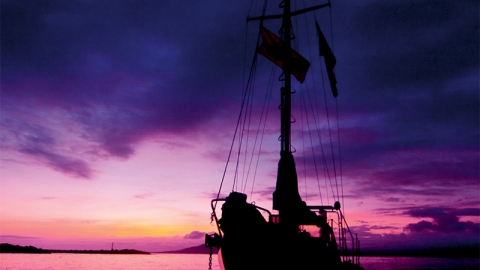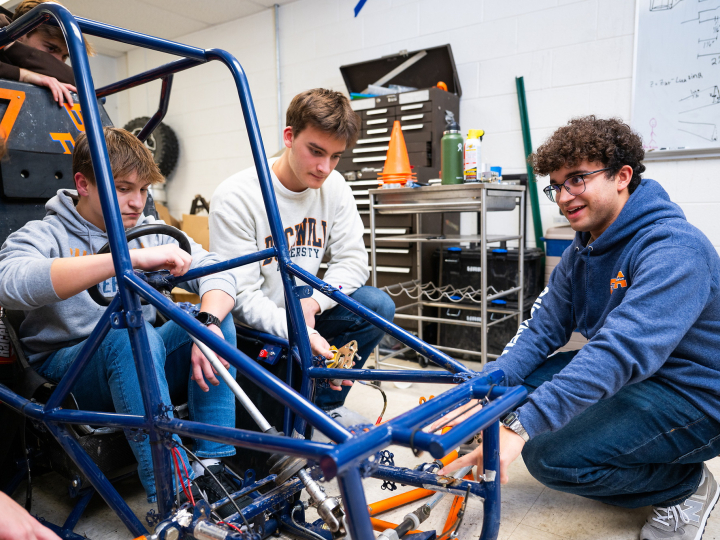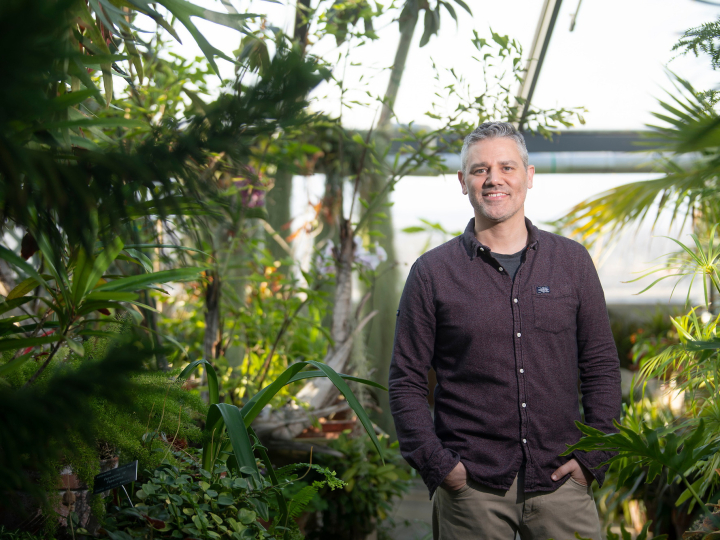
Captain Dwyer's Solo Voyage
July 14, 2016
Rascal crossing the notorious Gulf of Corcovado, Chilean Patagonia. Photo by Clinton Burnett.
A resourceful engineer spends a year sailing his Rascal on the roiling ocean.
Dwyer Haney ’10 had a good job in the field in which he’d always excelled. But he wanted more. He charted a path few would have the courage to follow, quitting his job as a design and development engineer and taking the $75,000 he’d saved from frugal living to pit himself against the world — or the ocean, as it turned out.
Haney hit the road in his truck, inspecting boats for sale from California to British Columbia. In Bellingham, Wash., he found her: a 54-year-old 30-foot fiberglass sloop that he re-christened Rascal.
Tales of adventure on the high seas had captured his imagination. “I didn’t have any practical sailing experience, though,” he says. “I’d been sailing [fewer] than six times.”
Haney’s self-assurance sprang from a belief that he could engineer a solution to the problems he’d encounter on the trip he had in mind: a 12,000-nautical-mile voyage to the fjords in southern Chile, where he intended to ski.
Engineering solutions had been on his mind since he was small. Little Dwyer solved every mechanical puzzle he could find, the more complex the better. He took all the engineering classes offered at his small high school through the Rochester Institute of Technology and entered Bucknell with a straight-A transcript, intent on becoming an engineer. He earned the Class Award for Excellence for leadership demonstrated his first year.
Midway through school it struck him: “I don’t have a numbers-punching, cubicle-dwelling personality.”
After graduating with a B.S. in mechanical engineering, he moved on to Salt Lake City, where he’d talked his way into an internship at an outdoor-equipment company for which he eventually oversaw the construction of a ski-manufacturing plant in China.
In Bellingham, he overhauled Rascal and taught himself to sail. In April 2014, he set out, cruising down the West Coast to Mexico, honing his skills as he went. Friends and family joined him for short cruises. They explored villages, coves, inlets and islands as he waited out the 2014 hurricane season.
Disaster nearly scuttled his plan, though. He had left a friend aboard the boat and taken a brief stateside trip in September when Hurricane Odile struck the Sea of Cortez, where Rascal was moored. The friend rode out the storm. Odile pulled up the boat’s three anchors and flung her ashore, but she survived mostly unscathed.
Haney’s greatest test, an engine fire, happened on the open ocean, about 1,000 miles from land between the
Galápagos Islands and Puerto Montt, in southern Chile.
He quenched the fire, found the leak that had caused an electrical short and, trembling, fashioned a fix. “There are lots of things that can go wrong on a boat, but a fire is the biggest thing,” he says.
His troubles weren’t over. Soon after, a brass fitting joining the tiller and rudder cracked, requiring more innovative engineering. His most important resources on the trip, he says, were a roll of duct tape, an adjustable wrench and common sense.
Haney reached Chile in spring 2015 and spent a year skiing and seeking new adventures. Early this year he sold Rascal. Touring the U.S. now in an ancient Mercedes that runs on used fryer oil, he’s rekindling friendships and scouting for a job that supplies tough problems to solve and ways to heal the environment.
“I think I’ll be hard-pressed to feel daunted by any professional task now that I know that I can single-handedly [captain] a boat for 37 days across the South Pacific,” he says. His blog, VoyageoftheRascal.com, is a colorful chronicle of his adventures.

